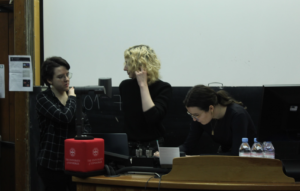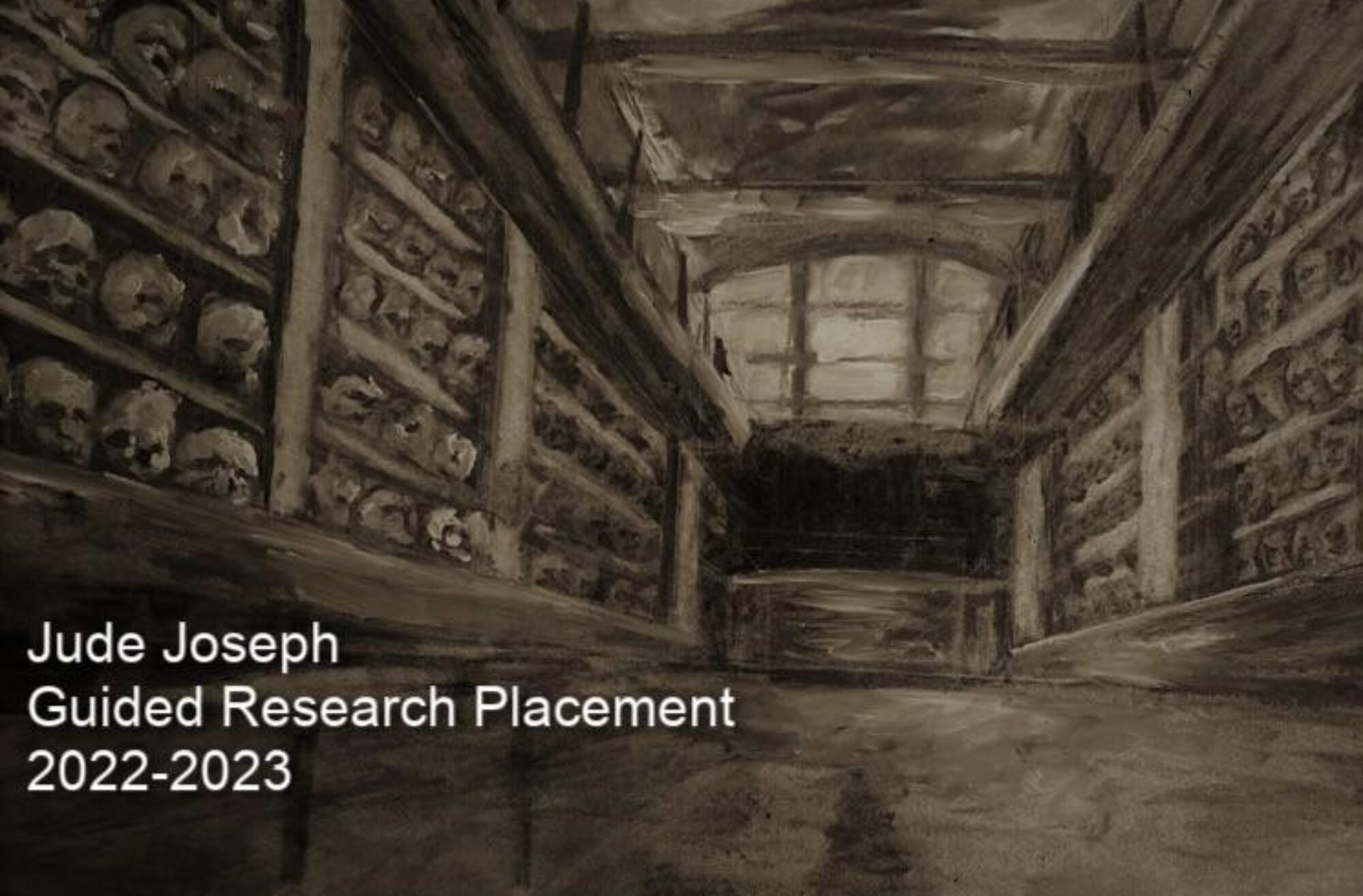(1) Identify your key responsibilities and list the main areas of work you have been involved in. Briefly highlight the skills and competencies that are relevant to this project/work area. [This section should be revised in time for the final submission]
Key Project Responsibilities So Far (October 2022)
- Identifying key strengths of group members is critical at this stage. We have all met each other and held discussions about what skills we can bring to this project. Some examples of these key competencies include leadership, graphic communication skills, public speaking and PR experience. This will be very useful when it comes to allocating roles.
- Brainstorming ideas for the event and developing creative responses to the brief.
- Research of the available literature on similar anatomical collections and how to take a decolonial approach is incredibly important. We have created an updatable reading list to keep track of our sources.
Key Project Responsibilities for the Finalized Project
- Communication between members of the GRP group and event speakers was the most important part of the organization. This involved articulating the specific aims of the event, discussing with each the strengths and limitations of what we could achieve together, and creating materials that could be shared by each to inform others about the project.
- Selecting the speakers was a key consideration. Because this project involved discussions around colonial history, racialized violence and institutional oppression, it was vital to discuss who’s perspective it was most important to include. We had to be careful to select speakers for whom there was a cultural connection with the history of the collection and to platform ubiquitously underrepresented voices. These included people of colour, women and those from an indigenous background. Our selection also focused on individuals who already had a deep research background in areas relating to the skull collection.
- Determining scale and defining what was achievable given our limitations as students within a university was important. It was vital to discuss with speakers (some of whom were understandably very passionate about the topic) how this event could make a difference in the future but also what not to expect from the outcome.
- Audience engagement through surveys and creative workshops on the day of the event helped determine how effective the dialogue had been as well as to engage people with this conversation in a new way through our “museum of me” workshop.
Skills and competencies relevant to this project/work area
- Effective organization and project management, especially planning and setting deadlines.
- Commitment to research, thinking creatively and making connections across different platforms and between different individuals.
- Communication skills between members of the group and with speakers from very different backgrounds.
- Self-awareness and the ability to collaborate and work as part of a team while being especially sensitive to changes in the group dynamic
- anticipating obstacles and intervening to minimize impact on the outcome, also the flexibility to change track when necessary.
(2) Looking ahead, list your key objectives for the GRP. 3-7 SMART (Specific, Measurable, Achievable, Relevant and Timed) objectives should be noted with realistic timescales and focused outcomes. The objectives should cover the project itself and your own role. [This section should be revised following feedback and finalised before the end of Semester 1]
Project Objectives
Create Public Engagement between GRP project and members of the public/ University staff and students.
- Specific: We are aiming to stimulate conversations about the University’s skull collection between the three members of our group as well as the wider University community.
- Measurable: We should create a space where responses to the event can be recorded. This could be through surveys, or an online forum where responses can be recorded.
- Achievable: Our budget of £2000 will be enough to create material in order to advertise our event, drawing in the public engagement we are seeking.
- Relevant: Because the issue of human remains in institutions is something that doesn’t only effect those within the University, but society as a whole, creating an opportunity for this dialogue to spread beyond the campus should be a focus.
- Timebound: We have a good deal of time to finalise the themes of our event as well as a visual identity before we begin advertising (closer to the event). A broader dissemination of what our project is about should take place in semester 2.
Facilitate a conversation around humanising the remains in the Skull Collection.
Specific: To analyse and target areas in which the display and collection of human remains in the skull room has had a dehumanising effect. To discover how this dehumanisation has occurred will involve reading relevant literature as well as communication with experts in the area.
Measurable: Once again, we can establish opinions through surveying methods and recorded comments about how effective we have been in achieving this goal. We can collect these from those attending our event as well as researchers who have studied the history of the collection.
Achievable: There is a good deal of literature that will help us understand the dehumanising effect of colonial collections as well as a number of University staff who we can turn to for guidance.
Relevant: To understand the remains in the skull room as the bodies of once living people is an anti-colonial action and very relevant to current conversations surrounding institutional collections.
Timebound: If we dedicate the first semester to reading and dialogue between ourselves and those with a research background in the skull collection, we will have a good deal of understanding when it comes to putting together the event practically in semester 2
DISCURSIVE SELF-REFLECTION
The project overall was successful in the organisation of an engaging and thought provoking event which was elevated by creative audience interaction, sensitive care over the subject matter and well informed selection of speakers. This created a very enriching and deep dialogue around humanising the remains housed in the skull room.
Over 50 visitors came to the event and the majority completed a survey, in addition to recorded discussion and interaction, which will provide a wealth of quantitative and qualitative information that can be studied and used to the ends of rethinking and improving such collections in the future. In this way, we have created a lasting legacy for the event that can continue to be of use in years to come. In addition the rector’s involvement in the event means that a conversation around changes to the collection is due to take place amongst the university management; a real tangible difference!
Some areas of improvement, that can be applied to future projects, include awareness of the necessity of communication between the members of the group at all times and as early as possible, recognising the limits of ambition in a project so that each member does not feel that they have bitten off more than they can chew, and critically for this project, allocating tasks with equal proportion and with consideration for each members time and capability. I think that a lack of attention to these factors led to some tension within the group and put us all under unnecessary pressure. Thankfully we were able to realise this early and improved organisation towards the second semester ensured that the event could proceed smoothly.
I think that communication, directness and leadership skills are something which I have struggled with during this project. If I wish to feel more ownership over the end result of a project in future, these must be the areas which I work on. A reliance on other members of the group for whom these factors weren’t a concern meant that my voice could not be heard as much as it had the potential to be. Still though, I found a great deal of satisfaction in the creative elements of the project and in communication and discussion with speakers prior to the event. I am proud of my selection of attendees, in particular, Tobias Houlton from the University of Dundee and Debora Kayembe, the rector of the University.

The three of us nervously putting together the finishing touches on the day of the event.


